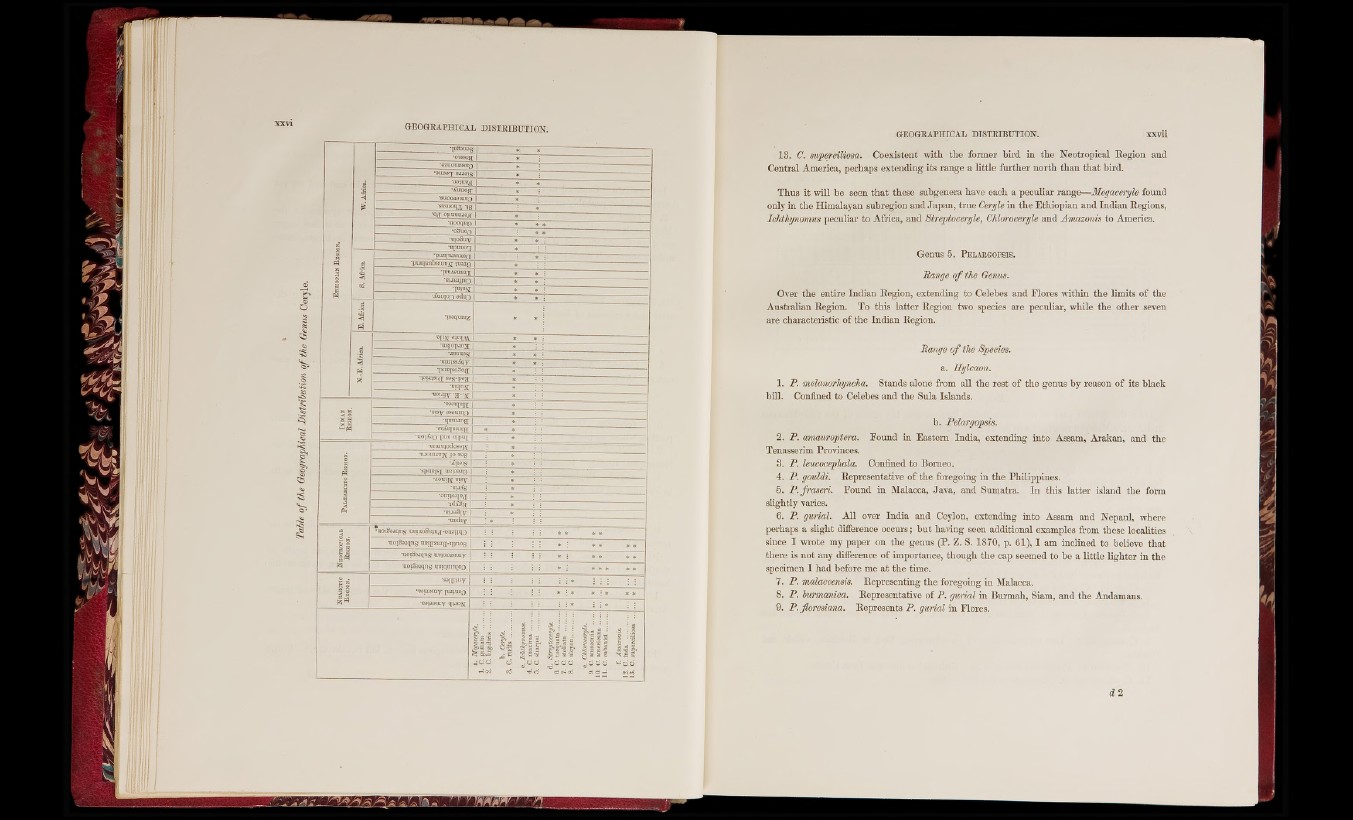
GEOHEAPHICAL DISTEIEUTIOK.
“S .
•uoiSaiqng uoiuoSirju^-onoiiq^j
•noiSaaqns amjizBjj-qinog
lorSszqng nBiuoznnry
■Boizatav 1«J)U93
'’!.S i
o d d Z d d d '*^dd
oi-cd cid-5 oied
GEOGRAPHICAL DISTRIBUTION. xxvii
13. C. superciliosa. Coexistent with th e former bird in the Neotropical Eegion and
Central America, perhaps extending its range a little fu rth e r n o rth th an th a t bird.
Thus i t will be seen th a t these eubgenera have each a peculiar range—Megaceryle found
only in the Himalayan subregion and Ja p an , tru e Ceryle in th e E thiopian and In d ian E egions,
Ichthynomus peculiar to Africa, and Streptoceryle, Chloroceryle and Amazonis to America.
Genus 5. P elargopsis.
Bange o f the Genus.
Over the entire In d ian Eegion, extending to Celebes and Flores within th e limits o f the
Australian Region. To this latter Region two species are peculiar, while the o th er seven
are characteristic o f th e In d ian Region.
Range o f the Species.
a. Hylcaon.
1. P . melanorhyncha. Stands alone £i*om all th e rest o f th e genus by reason o f its black
bill. Confined to Celebes and the Sula Islands.
2. P . amauroptera. Found in Eastern India, extending into Assam,'Arakan, and the
Tenasserim Provinces.
3. P . leucocephala,. Confined to Borneo.
4. P . gouldi. Representative of tbe foregoing in tbe Philippines.
5. P . fraseri. Found in Malacca, Java, and Sumatra. In this latter island th e form
slightly varies.
6. P . gurial. All over In d ia and Ceylon, extending into Assam aud Nepaul, where
perhaps a slight difference occurs ; b u t having seen additional examples from these localities
since I wrote my paper on th e genus (P. Z. S. 1870, p. 61), I am inclined to believe th a t
there is n o t any difference o f importance, though th e cap seemed to be a little lig h te r in the
specimen I had before me a t th e time.
7. P . malaecensis. Representing tbe foregoing in Malacca.
8. P . humnanica. Representative o f P . gurial in Bui-mah, Siam, and the Andamans.
9. P.fioresiana. Represents P . in Flores.